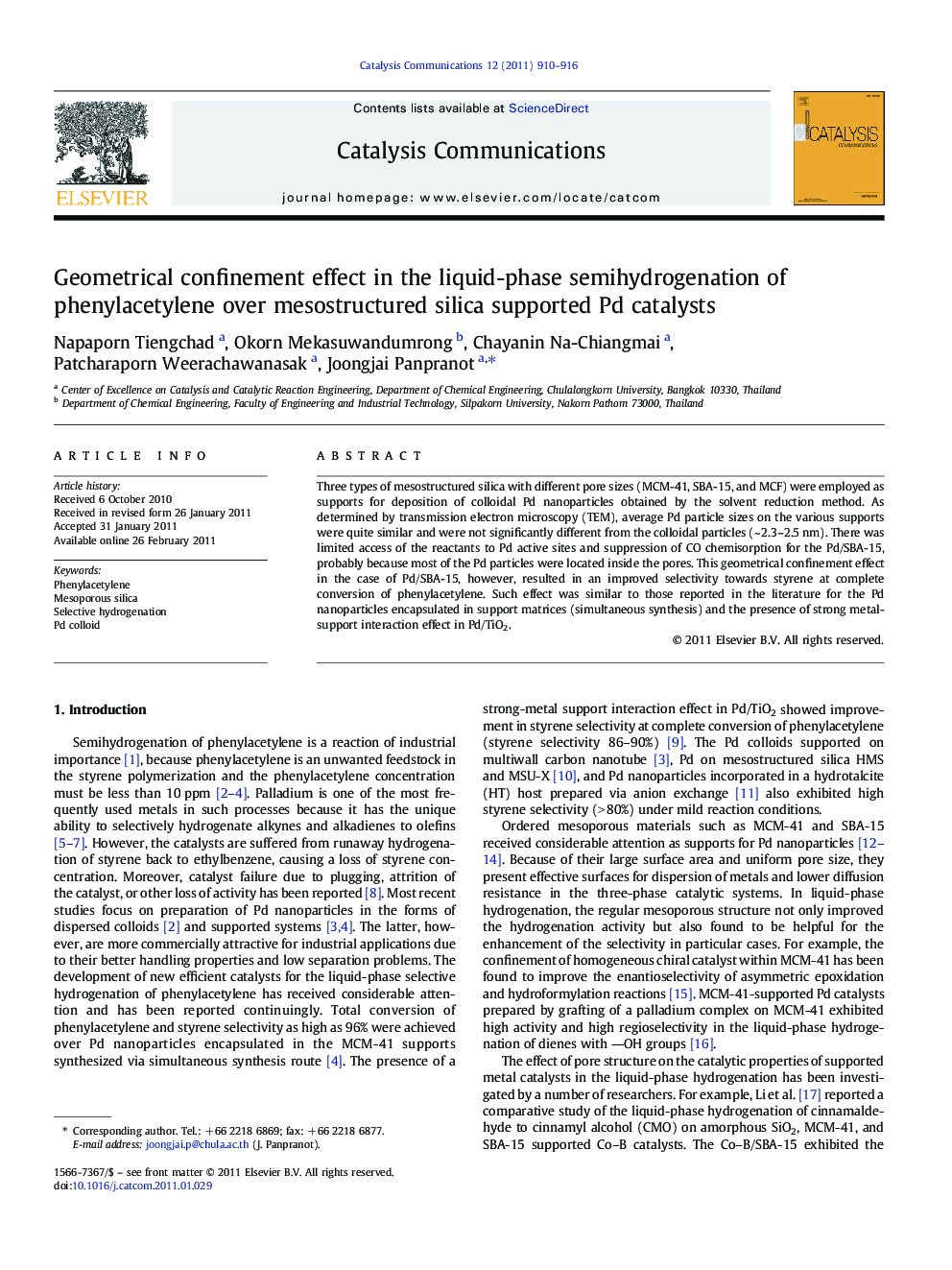| کد مقاله | کد نشریه | سال انتشار | مقاله انگلیسی | نسخه تمام متن |
|---|---|---|---|---|
| 50700 | 46809 | 2011 | 7 صفحه PDF | دانلود رایگان |

Three types of mesostructured silica with different pore sizes (MCM-41, SBA-15, and MCF) were employed as supports for deposition of colloidal Pd nanoparticles obtained by the solvent reduction method. As determined by transmission electron microscopy (TEM), average Pd particle sizes on the various supports were quite similar and were not significantly different from the colloidal particles (~ 2.3–2.5 nm). There was limited access of the reactants to Pd active sites and suppression of CO chemisorption for the Pd/SBA-15, probably because most of the Pd particles were located inside the pores. This geometrical confinement effect in the case of Pd/SBA-15, however, resulted in an improved selectivity towards styrene at complete conversion of phenylacetylene. Such effect was similar to those reported in the literature for the Pd nanoparticles encapsulated in support matrices (simultaneous synthesis) and the presence of strong metal-support interaction effect in Pd/TiO2.
There was limited access of the reactants to Pd active sites and suppression of CO chemisorption for the Pd/SBA-15, probably because most of the Pd particles were located inside the pores. This geometrical confinement effect in the case of Pd/SBA-15, however, resulted in an improved selectivity towards styrene at complete conversion of phenylacetylene.Figure optionsDownload as PowerPoint slideResearch highlights
► Pd nanoparticles supported on MCM-41, SBA-15, and MCF mesoporous silica.
► Catalyst performances in the liquid-phase selective hydrogenation of phenylacetylene.
► Geometrical confinement of Pd nanoparticles in SBA-15 improved catalyst performance.
► High styrene selectivity (85%) was achieved at total conversion of phenylacetylene.
Journal: Catalysis Communications - Volume 12, Issue 10, 15 May 2011, Pages 910–916